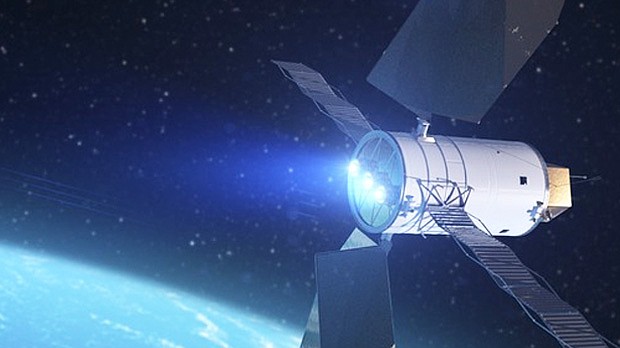- May 2, 2024
-
-
Loading

Loading

NASA officials are hoping to bring jobs to Earth by strapping an asteroid to the back of a spaceship and towing it to the moon. Science fiction? A NASA spokesman said the space agency is hoping to turn it into science fact, and faster than most of the agency’s projects.
“When you hear about it, it obviously sounds very audacious, and it is,” said Allard Beutel, a spokesperson for NASA. “But it’s also very possible.”
And the out-of-this-world “asteroid initiative” could bring new jobs and provide an economic stimulus to the Central Florida area over the next few years.
With a launch set for 2017, the asteroid initiative is currently in the planning stages, and involves identifying an asteroid and using an unmanned spacecraft to tow the rock into a stable orbit around the moon for future study.
And that unusual mission could lead to a boost in the local economy that comes with the construction, training and research of launching space missions from the Kennedy Space Center, Beutel said.
“We’re talking about jobs in the United States and launching from U.S. soil again,” Beutel said. “It helps the local economy, it helps the United States, the space coast and it helps Central Florida.”
University of Central Florida economist Sean Snaith said this could provide an economic boost, on the condition that it’s actually carried out.
“It’s good news and a needed boost if it happens,” Snaith said. “I’m a little bit concerned that it may never come to fruition, but that being said, if it does happen, it certainly helps to fill in the crater hole that was left in the space coast economy when the shuttle program came to an end.”
Despite the end of the shuttle program at the space center, Central Florida continues to be a force in space technology and research, leaving the door open for continued economic opportunities.
“Any time you have a technology development corridor like we have in Seminole County with UCF and the Research Park, which is in Orange County, but directly below Seminole County, that provides an opportunity for dollars to come in to develop technology and apply it,” said Oviedo councilmember Keith Britton, who works in NASA’s project planning and construction office. “It does provide a little bit of an opportunity for us.”
One of the biggest power players in the research field within Central Florida is UCF, who recently received a $55 million grant from NASA to build and launch an instrument into space to capture images of Earth’s upper atmosphere.
The launch of the instrument is also set for 2017, with the Kennedy Space Center as a potential location.
Beutel mentioned that the increased involvement of businesses and universities with NASA’s research and operations is a sign of the times ahead, and that this will mean even more jobs down the road.
“It’s a slow transformation from what had been traditionally a government-centric spaceport to a multi-user spaceport, which would allow a lot more diversity, more jobs and more technological development in the area,” Beutel said.
While there is great potential for an economic boost in Central Florida, Beutel urged the public not to forget the big picture when it comes to the asteroid initiative: protection from incoming asteroids.
“This would help the potential of pulling together a mission that would be needed to steer a potentially dangerous asteroid that could cause serious damage and even wipe out the planet,” Beutel said. “It’s not science fiction; we get hit be space rocks every day of different sizes.”
“With the one that came over Russia in February, that happens every 50 to 100 years, but you saw the kind of damage that one caused. That one didn’t even reach the ground.”
NASA has a follow-up mission to the asteroid initiative planned for 2021, where the new Orion spacecraft will be sent to gather samples and study the captured asteroid.